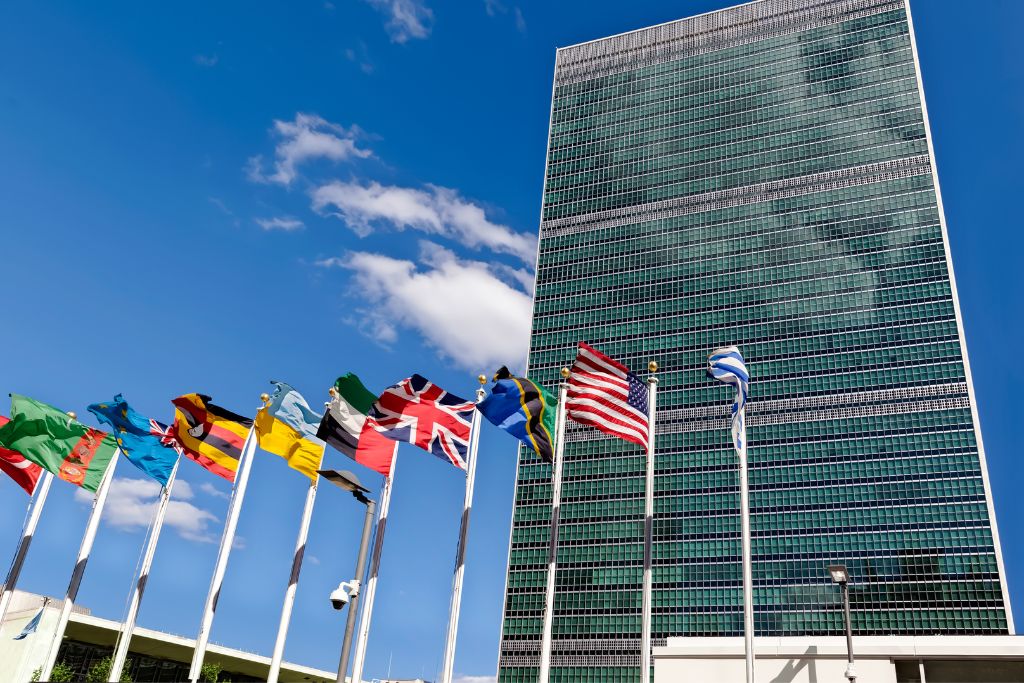More than 100 UN member countries agreed on a legally binding ocean treaty to ensure the conservation and sustainable use of marine biological diversity in international waters. The challenge now lies in mobilising funds and finding ways to protect international waters, as most areas are extremely inaccessible.
—
Over a decade of negotiations for an ocean treaty to protect international waters have finally borne fruit as UN member countries on Saturday agreed to establish marine protected areas spanning millions of kilometres and help reverse marine biodiversity loss.
Delegates gathered at the United Nations headquarters in New York have spent two weeks trying to reach an agreement on the high seas, vast stretches of the ocean beyond national boundaries that cover two-thirds of all ocean and almost half of the planet, are home to up to 10 million species and an invaluable source of food for billions of people.
Despite their importance, only 1% of high seas is currently protected, and climate change-related phenomena such as pollution and ocean acidification as well as human activities like overfishing pose a growing threat.
About 10% of the assessed marine animal and plant species are currently classified by the International Union for Conservation of Nature (IUCN) as at risk of extinction but the number could be much higher considering the amount of unknown species in the deep seas.

Over 1,550 of the 17,903 marine animals and plants assessed by the IUCN are at risk of extinction, with climate change impacting at least 41% of threatened marine species.
You might also like: 11 of the Most Endangered Species in the Ocean in 2023
“The ship has reached the shore,” the conference’s president Rena Lee said on Sunday to announce the long-awaited Treaty of the High Seas after days of negotiations, the third round in a year, between more than 100 nations. Countries began discussing a potential ocean treaty in 2004.
Besides creating a legal framework to place 30% of the world’s oceans into protected areas, the High Seas Treaty guarantees funding for marine conservation and covers access to and use of marine genetic resources.
Agreeing on access and benefit sharing of marine genetic resources to make sure they are shared in an equitable way was a major sticking point during the latest round of negotiations, with developing nations arguing that benefit-sharing should be guaranteed and clarified in the treaty text.
“If you have a deal on marine genetic resources you bring lots of developing countries on board and they do not oppose marine protection. But you have to give them the resources. It’s a bargaining tool,” said Li Shuo, a senior global policy adviser for Greenpeace.
“It’s about trust and solidarity between the Global South and the Global North. It’s about who the high seas belong to – that aspect is more important than the dollars. If the high seas belong to everyone, the money needs to be shared by everybody.”
The landmark ocean treaty – which UN Secretary-General Antonio Guterres described as a “victory for multilateralism” – comes just months after world leaders agreed on protecting 30% of the world’s land, coastal regions and sea by the end of the decade at COP15 in Montreal, Canada. Saturday’s landmark deal is seen as a crucial component of the biodiversity framework, otherwise known as “30 by 30”.
Greenpeace campaigner Laura Meller is urging countries to ratify the treaty “as quickly as possible […] and then deliver the fully protected ocean sanctuaries our planet needs.”
“The clock is still ticking to deliver 30 by 30. We have half a decade left, and we can’t be complacent.”
The European Commission welcomed the “historic” high seas treaty, with European Commissioner Virginijus Sinkevicius calling it a “crucial step forward to preserve the marine life and biodiversity that are essential for us and the generations to come.”
You might also like: Will the 2030s Be the Decade for Global Biodiversity Conservation?


















